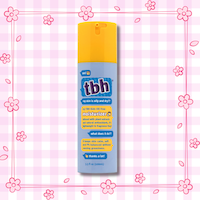HEALTH
Your Bod
Here's what all that Instagram stalking is actually doing to your eyes

Picture it: You're snuggled up in bed with your phone in hand. You're scrolling through your ex-boyfriend's sister's best friend's Instagram feed without a care in the world when, suddenly, you catch a glimpse at the time. You think: It's midnight? What?! I swear it was only 10 p.m., like, 30 minutes ago! Where did all the time go? Have I really been starting at this screen for two hours straight...? We're all pretty guilty of this feeling.
It's no secret that screens take up a lot of our time. It can seem like our eyes are looking at them almost as much as they look at, say, other people. You’ve even heard your parents warn you about how all that screen time can harm your eyes, and you probably responded by rolling them. But have you ever stopped to think that with all of our time spent in front of computers, cell phones and tablets, they actually have a point?
Then let's chat about computer vision syndrome. The symptoms of this syndrome can consist of blurred vision, eye irritation and pain, dry or red eyes and even pain in your neck or back from the angles that you’re looking at a screen. While we don’t know for sure if screens can cause long term damage to eyes, they *can* cause our eyes discomfort and pain. Fifty to ninety percent of people who work at a computer screen have some symptoms of CVS.
But why does this happen at all? Why are screens so bad for our eyes?
When you’re looking at a screen, your eyes are constantly working. The letters aren’t as defined as they are on paper so your eyes are continuously focusing and refocusing. Often, at a computer, you’re not just looking at your laptop, but looking back and forth from a blackboard to the screen or from paper to a screen, which strains your eyes from the differences in what they're looking at. Phone-wise, we tend to hold them closer to our faces than we would hold books or papers, and this makes our eyes strain to focus on the tiny words on the phone. Screen users tend to be more affected by such problems if they already struggle with eye issues. Another problem: We often blink less when we’re staring at a screen, and blinking is necessary for keeping eyes moist and healthy. Typically, you’re supposed to blink about 18 times a minute, but while you’re looking at a screen, studies tell us that we blink about half of that. Talk about dry eyes!
But most of all, the glares and reflections and flickers of a screen are just not natural for your eye to deal with, and that’s what mainly causes the problem.
How can you help yourself? Well the obvious answer is to cut back on your screen time, but that’s usually a little unrealistic, especially if you use laptops in school and for homework. But you can follow the 20-20-20 rule. If you’ve been staring at a screen for about 20 minutes, look at something about 20 feet away for 20 seconds. It’ll give your eyes a break from the glare of a screen, and give them something else to focus on. Make sure you blink a lot as well to keep your eyes moist. If that’s not working, you can try some generic saline eye drops.
We'll let you in on another big secret: These practices are good to put into place even if you’re *not* experiencing CVS symptoms; just because you don’t encounter eye discomfort now doesn’t mean you won’t in the future. But if you do have symptoms, see your eye doctor. Computer vision syndrome may not cause long-term damage, but it’s really uncomfortable!
Are screens bothering your eyes? Do you feel that you look at screens for too often and for too long? Tell us about it in the comments!
We want to hear from you! Send us your weirdest body questions here (seriously, we'll answer anything!) and it just might get featured.

 become a contributor
become a contributor


















